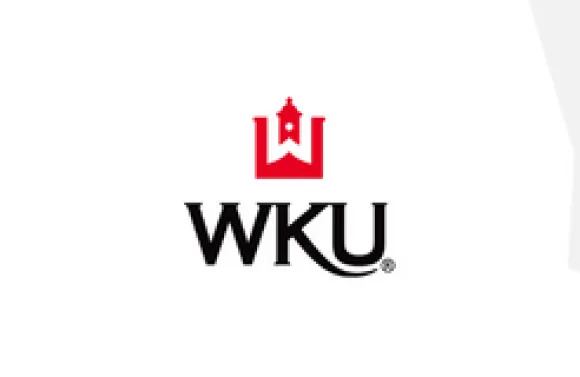
Today's employers continue to feel the pinch of high health care costs. Those who've chosen to go self-funded (over 90 percent of companies with over 1,000 employees1) have a greater opportunity to manage their spend, but may also have more to lose if they can't.
In this article, we'll look at three key mechanisms through which self-funded employers can hold health care spending in check, and how each of these can be applied successfully.
But first, let's briefly sketch out the landscape in which large employers are operating when it comes to health care:
Trends Impacting Self-Funded Employer Health Plans
Employers expected to spend over $15,000 per employee per year on health care 20202 with those costs estimated to increase roughly 4 percent over the next year.3 While that seems like a relatively flat rate of growth, health care costs continue to outpace the growth of the U.S. economy—making it difficult for employers to keep up.
Studies show the bulk of health care expenses can be attributed to chronic conditions. In fact, 60 percent of adult Americans have been diagnosed with at least one chronic disease or condition, and 42 percent had multiple diseases resulting in a cost of treatment of more than $1 trillion.3
Prescriptions, specifically specialty drugs and biologics, are reported as one of the largest drivers of health care cost growth for employers. With annual growth increases of over 15 percent, factors like price increases for existing drugs, the high cost of new specialty drugs, and a restrictive supply chain create unique challenges for health plans that come with a financial impact related to specialty drugs.4
Meanwhile, it's increasingly difficult for employees to keep up. The average American household spent over $5,000 on health care last year. Healthcare expenditures rose 4.5% in 2019, with health insurance, the largest component of health care expense, going up 3.6%. Health care outpaced both food and housing in growth from 2018 to 2019.5
So how can self-funded employers keep their costs down while also making sure health care remains affordable for their employees?
3 Primary Health Care Cost Management Levers
When we're working with our clients at Benefitfocus on data analytics strategies for health care cost control, we typically look at three major cost management levers:
- Plan Design
- Vendor Management
- Employee Engagement
Let's take a closer look at each of these levers, and how employers can use data analytics to pull them effectively.
Health Plan Design
There are a number of adjustments that self-funded employers can make to their health plan design to drive cost savings or help to curb cost growth. These include changes to the type or structure of the plan, like switching from a PPO or HMO plan to a high-deductible health plan (HDHP), and changes to employee cost sharing in the form of premiums, coinsurance and out-of-pocket maximums.
The challenge for employers is making sure ahead of time that any changes they make to plan design will actually have the desired outcome.
One of the primary ways Benefitfocus helps our clients do this is through experience-based plan modeling tools.
Integrated into Benefitfocus Health Insights, these tools allow employers to quickly and accurately evaluate changes to health plan design. With the ability to fully re-adjudicate current claims data, users can thoroughly review current year plans, test different scenarios and proactively analyze the sum-total financial impact of any plan design changes.
This can translate into:
- More accurate forecasting. By fully re-adjudicating current claims data across a comprehensive set of plan design variables, and with the ability to incorporate inflation, employers (and their advisors) can better project future health care costs.
- Significant time savings. Designing health plans manually can be time-consuming and confusing. With experience-based plan modeling tools, employers and brokers can build and test new plan scenarios in a matter of minutes.
- Greater visibility on financial impact. These tools provide end-to-end financial analysis of current health plan versus alternate design, enabling employers and brokers to understand the full impact any changes will have on both employer and employee spending.
Vendor Management
There's a wide variety of vendors with whom self-funded employers can partner to achieve their strategic goals for their health plan.
These vendors can be organized into three categories, each with its own set of cost-saving opportunities for employers:
- Carrier, TPA: Population risk by segment, plan steerage and benefit constraints, and direction to cost control partners.
- Providers, Networks: Service pricing, care settings, and use and management of Rx
- Medical Management: Year-round engagement and education, specific engagement with at-risk members, and results over specified times.
However, as with plan design, employers need to be able to clearly understand and evaluate the impact these vendors are having or will have, so they can make informed decisions around these relationships.
A customer at Benefitfocus used Health Insights to identify frequent types of surgeries occurring within their employee population. They discovered that prices for certain orthopedic services fluctuated dramatically across their providers. The customer was able to find a vendor that specialized in these services, and used the data from their analysis to contract with the vendor based on cost and quality, implementing plan-based steerage incentives to drive employees to the vendor for those specific services. Moving forward, the customer can use our analytics tools to determine ROI for this new vendor relationship.
Employee Engagement
It's no secret that health insurance is complex. But did you know that fewer the one-third of insured Americans understood basic health care terms like copay, deductible, and premium?6 In fact, 26 percent of Americans avoided care or treatment because they were unsure about their health plan and insurance coverage.7
Now think about the countless other terms, concepts and components that come up when trying to navigate the health care system. Employees need help in order to be able to use their health benefits wisely. Health literacy is a key component of employer health plan cost control.
At Benefitfocus, one of the ways we help our clients drive health literacy is through engaging decision support tools embedded into the health plan enrollment experience. When weighing plan options, employees can consider their own prior-year claims and utilization data, which feeds in from our analytics solution, and estimate their total out-of-pocket costs under each plan. This provides employees greater transparency on which to base their enrollment decisions.
Benefitfocus customer Western Kentucky University, which had offered one PPO plan for 16 years, took advantage of these tools to drive significant enrollment in a new HDHP, resulting in a $2 million reduction in health care spending the following year. Get the full story in this case study.
Self-funded employers have a huge stake in the health of their populations. With the right insights and tools, they can help employees get high-quality care at cost-effective prices, helping to ensure long-term viability for their health plans.
1. Kaiser Family Foundation. 2018 Employer Health Benefits Survey. October 2018. https://www.kff.org/report-section/2018-employer-health-benefits-survey-section-10-plan-funding/
2. Business Group on Health. 2020 Large Employers Health Care Strategy and Plan Design Survey. January 2020. https://www.businessgrouphealth.org/resources/2020-large-employers-health-care-strategy-and-plan-design-survey
3. Mercer. Health Benefit Costs Expected to Grow 4.4% in 2021, Mercer Survey Finds. October 2020. https://www.mercer.us/our-thinking/healthcare/health-benefit-costs-expected-to-grow-4-point-4-percent-in-2021-mercer-survey-finds.html
4. Centers for Disease Control and Prevention. Health Care Industry Insights: Why the Use of Preventive Services Is Still Low. March 2019. https://www.cdc.gov/pcd/issues/2019/18_0625.htm
5. The Segal Group.2020 Segal Health Plan Cost Trend Survey. Fall 2019. https://www.segalco.com/media/1664/segal_trend_survey_2020.pdf
6. U.S. Bureau of Labor Statistics. Consumer Expenditures 2019. September 2020. https://www.bls.gov/news.release/pdf/cesan.pdf
7. PolicyGenius. Health Insurance Literacy Survey 2019: Americans are increasingly confused about health care. October 2019. https://www.policygenius.com/blog/health-insurance-literacy-survey-2019/
8. PolicyGenius. Health Insurance Literacy Survey 2020: Widespread confusion continues in an election year. October 2020. https://www.policygenius.com/blog/health-insurance-literacy-survey-2020/


